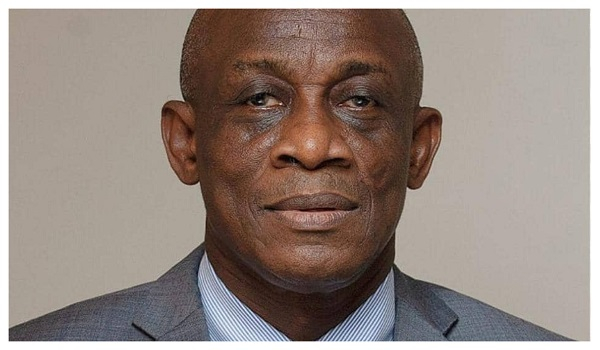India Grapples with COVID-19 Surge and Potential Restrictions

The shadow of COVID-19 has made a concerning return in 2025, prompting renewed vigilance and the reintroduction of precautionary measures by the central government in India. The nation's active caseload has surged past 5,755, with recent reports indicating four deaths due to complications in a 24-hour period. In response to the escalating situation, the Government of India has issued an updated public advisory and revised COVID-19 guidelines following high-level consultations with state representatives.
The current viral resurgence is largely attributed to the emergence of new mutations in the SARS-CoV-2 virus, specifically involving new variants from the Omicron family. Variants such as NB1.8.1, XFG, and LF7 are understood to be the primary drivers of the infection surge within India. Concurrently, another Omicron sub-variant, JN.1, is contributing to an uptick in cases across other Asian countries, particularly in Southeast Asia. Due to its rapid global spread and potential impact, the NB1.8.1 variant is currently classified by the World Health Organization (WHO) as a "variant under monitoring."
Reflecting a proactive stance, the central government has initiated a series of high-level meetings with state authorities to ensure a coordinated and effective response to the rising cases. The Union Health Ministry has issued directives to all states, mandating the guaranteed availability of essential medical resources. These include adequate oxygen supplies, a sufficient number of isolation beds, functional ventilators, and a ready stock of critical medicines to effectively manage any potential escalation in COVID-19 cases.
Across the nation, healthcare infrastructure is being rigorously assessed. Hospitals are conducting readiness checks, which include mock drills, to evaluate their preparedness for a potential new wave of infections. Significant emphasis is being placed on ensuring seamless oxygen delivery systems and well-rehearsed emergency protocols. Simultaneously, public health surveillance has been intensified. States have been instructed to more aggressively monitor cases of Influenza-Like Illness (ILI) and Severe Acute Respiratory Infection (SARI). As part of this enhanced surveillance, hospitals are required to test all admitted SARI cases for COVID-19, as well as 5% of reported ILI cases, to identify hidden transmission patterns. Furthermore, a critical component of the strategy is genomic sequencing; all COVID-positive samples must be sent to the Indian Council of Medical Research (ICMR) laboratories. This measure is crucial for the early detection and characterization of any new or emerging viral variants and understanding their potential threat levels.
As of early June 2025, India's total active COVID-19 caseload stood at 5,755, with hundreds of new cases being reported daily in some regions. Kerala continues to report the highest number of active infections, with 1,806 cases. Other states significantly affected by the resurgence include Gujarat, with 717 active cases; Delhi, with 665 active cases and reporting two of the recent four national fatalities; West Bengal, with 622 cases; and Maharashtra, with 577 cases. Concerning trends of rising infections are also being observed in Karnataka, which has recorded 438 active cases, including a notable spike of 112 new cases within a single 24-hour period. Uttar Pradesh has reported 198 cases, and Rajasthan has 103 active cases. Meanwhile, Odisha has taken proactive steps, identifying 38 active cases from 755 samples tested by June 6, 2025, with most patients reported to be stable and recovering under home isolation.
The proliferation of these new, highly mutated variants has understandably raised concerns regarding their potential to evade the immunity conferred by existing COVID-19 vaccines. However, a somewhat reassuring observation from the current data is that while these variants appear to be more transmissible, the severity of the illness they cause is generally lower compared to earlier pandemic waves. A significant number of infected individuals are reportedly recovering successfully under home isolation, without the need for hospitalization.
Union Health Minister J.P. Nadda has affirmed that the country possesses an active and advanced system to effectively deal with public health emergencies. In line with this, several state governments have issued local advisories, recommending the public to wear masks in public spaces and avoid mass gatherings. Proactive measures also include the establishment of dedicated isolation wards in government hospitals to manage any sudden increase in patient load. Separately, the Delhi High Court has expressed concerns over delays in establishing standardized protocols for test sample collection, transport, and collection centers, issuing an order on May 28 that cautioned "the next pandemic is far from over" and called for a report on implemented measures. Despite the current surge in cases, many experts believe that while sustained vigilance is paramount, a large-scale outbreak reminiscent of previous pandemic phases is less likely at this juncture, with the new variants considered manageable. Consequently, the prospect of another widespread national lockdown appears distant, though continuous monitoring of the situation is essential.
The public is strongly urged to adhere strictly to established and reinforced preventive measures to help curb the spread of the virus. Key among these are the consistent practice of good hand hygiene, including regular handwashing with soap or using alcohol-based sanitizers, and following proper cough etiquette, such as covering the mouth and nose when coughing or sneezing. It is also advised to avoid crowded places, particularly when feeling unwell. Individuals experiencing symptoms of acute respiratory illness should diligently self-monitor their condition and seek timely medical care if symptoms worsen. The consistent use of masks, especially in enclosed or crowded public spaces, and maintaining social distancing continue to be crucial tools in the collective effort to control transmission and protect community health.



:max_bytes(150000):strip_icc()/covid-study-GettyImages-1737003345-9cfdad66b54344a48baae306c4334023.jpg)








